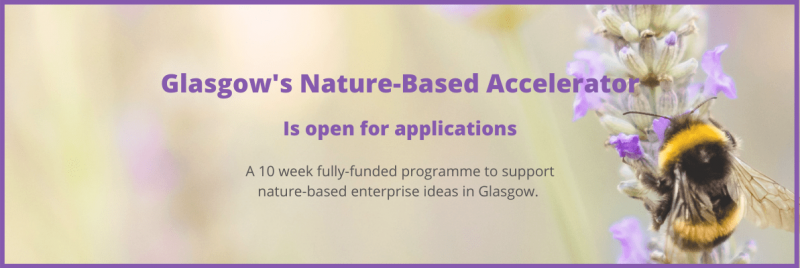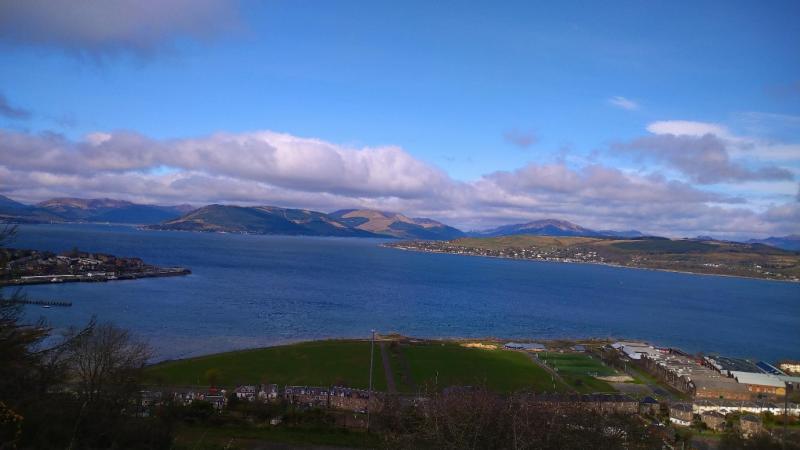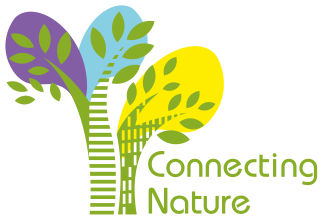About
Population - 626,000
Glasgow is situated on the River Clyde in Scotland's West Central Lowlands.
Glasgow is focused largely around tertiary sector industries such as financial and business services, communications, biosciences, creative industries, healthcare, higher education, retail and tourism.
It has grand buildings from the industrial era, luscious green parks and numerous attractions along the waterfront.
Connecting Nature Partner – Glasgow City Council
Contact: Gillian Dick - Gillian.Dick@glasgow.gov.uk
News & Events
23rd April 2021

A fully-funded 3 month programme to support nature-based business and social enterprise ideas
Glasgow City Council’s H2020 Connecting Nature project, in partnership with The Melting Pot’s Good Ideas and Glasgow Caledonian University, have just launched a new Nature-Based Accelerator. This is a pilot programme to support early-stage nature-based businesses and social enterprises (nature-based enterprises*) that are or could be making positive environmental, social, and economic change in Glasgow. The initiative is a 3 months fully-funded programme and is the first of its kind in Scotland. We are seeking individuals, existing enterprises, entrepreneurs or community groups to take part.
The overarching aims are to find new ways to encourage more local and resilient nature-based economies, create more green jobs, and help us to achieve our net-zero targets. One of the main focuses of the pilot is how we can use innovative enterprise ideas to help improve and maintain open spaces in Glasgow.
Spaces are limited and applications should be received no later than 21st May 2021.
*A nature-based enterprise has a broader definition than you might initially think. It can include many different types of organisation such as social enterprises, a collective, charities or even a for-profit business. The key criteria is that nature is used either directly or indirectly as a fundamental part of their product, service or process whilst also supporting climate change, health and wellbeing and biodiversity policy agendas. Examples can include food or other community growing; beekeeping; nature-focused landscape architecture; eco-tourism; urban forestry; biomaterials; carbon off-setting; vocational & skills training plus lots more. You can find more examples and more information about nature-based enterprises by checking out the Connecting Nature Enterprise Guidebook.
More details and the application form can be found at: https://good-ideas.org/nature-based-accelerator’
17th June 2020

The Development Plan team at Development and Regeneration Services (DRS) are inviting you to share images and videos of the city during lockdown.
The team promote the council’s Open Space Strategy recognises that well managed, designed and located open space can help enhance the health and wellbeing of Glasgow’s inhabitants; the liveability of the city, increasing its attractiveness for people and investment; and the resilience of the city, its people and biodiversity, to threats such as existing flood risk and climate change.
This strategy recognises the wider benefits that open space can bring to the city and its inhabitants. This has been particularly evident during lockdown.
Gillian Dick, Spatial Planning Manager said: “We’re working with colleagues in the University of East London to capture photos and videos of the Glasgow lockdown and how it feels in the city as we emerge from lockdown
“As part of our work on the H2020 Connecting Nature Project we’re trying to capture our #isowalkglasgow stories. These will be used to capture how the community have felt and interacted with their spaces and places during lockdown.
Gillian added: “The images will be used to curate a virtual visual story of Glasgow and its surrounding area during lockdown and as we emerge from it. Hopefully the material can then be passed onto the City Archive at Glasgow Life so that we have a record of this moment in time.
“We’d really love staff to submit a photograph or video of the spaces and places that they have valued during lockdown. This could be a photo from someone’s window or of a local park or empty footpaths in their neighbourhood. Or people could submit a photograph of the places they’ve been missing during lockdown.”
Share your images and videos
- If you have an image you’d like to submit, please email to: connectingnature@glasgow.gov.uk
- If you have a video that is linkable to, either through youtube or Wetransfer, please send us a link or tweet / Instagram with the #isowalkglasgow
- Please include details of your name, the area you live in, location of photograph, and brief details of why the place matters to them.
Photograph: Gillian lives in Greenock and has shared a photograph taken from the top of Lyle Hill– a space that she can walk to in 15 mins and is the only time she can get a glimpse of Glasgow. Gillian loves the feeling of openness that the view has given her and the reminder that the west of Scotland is beautiful.
The Nature of Cities Summit in Paris (June 2019)
At the very opening of The Nature of Cities Summit in Paris (June 2019), Gillian Dick was one of the13 speakers invited to the stage. They each delivered a 90 second talk entitled “What is the city of my dreams?” under a slide with the text “This is conversations as they often are”. They delivered these 13 talks at the same time, in glorious concophony. Click here to view the video of the opening and the script.
Press Releases:
PLANS SUBMITTED FOR GEOTHERMAL ENERGY RESEARCH OPPORTUNITY IN CLYDE GATEWAY
Two of the UK’s leading scientific agencies have submitted plans for an exciting new research development proposed for the Clyde Gateway area in the east end of Glasgow.
The focus of the research at the Glasgow Geothermal Energy Research Field Site would be geothermal energy. It is one of two sites proposed in the £31 million UK Geoenergy Observatories Project led by The Natural Environment Research Council (NERC), the UK’s main agency for funding environmental sciences, and the British Geological Survey (BGS), the UK’s principal provider of impartial geological evidence since 1835. This major project will provide infrastructure for future research opportunities. The second site is proposed for Cheshire. Read more.....
Planning: Environmental evidence:
Environmental evidence underpins everything we do to plan and make decisions on the design and delivery of high-quality, successful places in Scotland. New evidence approaches and collaboration need to be developed so that our key information can be used more effectively to help support the delivery of key priorities for our future places and people.
View our new web-page on Scotland Environment web!
Links
http://www.centralscotlandgreennetwork.org
Challenges
Dealing with the link between people and place to encourage ownership and stewardship - particularly driving entrepreneurship amongst the underprivileged.
Dealing with flood management and urban water based on public space.
Explore ways of dealing with management of public space in a period of austerity in public spending.
Vision
The green space is valued in terms of its function within the larger green-blue system. The local community accepts that these spaces help mitigate larger urban generated environmental problems.
There is a greater sense of engagement and entrepreneurship driven by local groups rather than by the city council.
The green network leads to far greater positive outcomes such as jobs, safety, physical and mental health.
5 years’ time
Securing funding for water management.
Local authorities and communities have a common understanding of the problems at hand and can speak the same language.
Communities accept that their public spaces are dynamic and may change based on natural events such as flooding.
Nature-based solutions used to activate other initiatives such as the ‘stalled spaces’.
Community organisations are driven to manage their water challenges.
10 years’ time
Urban generated water is used as a resource that can be fed back into the city’s needs.
Uptake of city-scale urban agriculture.
Cleaner air quality.
Increased entrepreneurship connected to flood alleviation.
Formally contaminated and inaccessible zones are greened and accessible.
15 years’ time
Actions result in scientifically proven outcomes.
Due to the nature-based solutions initiatives, positive secondary results have occurred such as safer streets and public spaces, physical and mental health has been improved.
A collective sense of the value of Glasgow, at a city scale, as a connected city.
Local entrepreneurship has also embedded a greater sense of ‘political engagement’ that has allowed younger actors to break through traditional structures.



